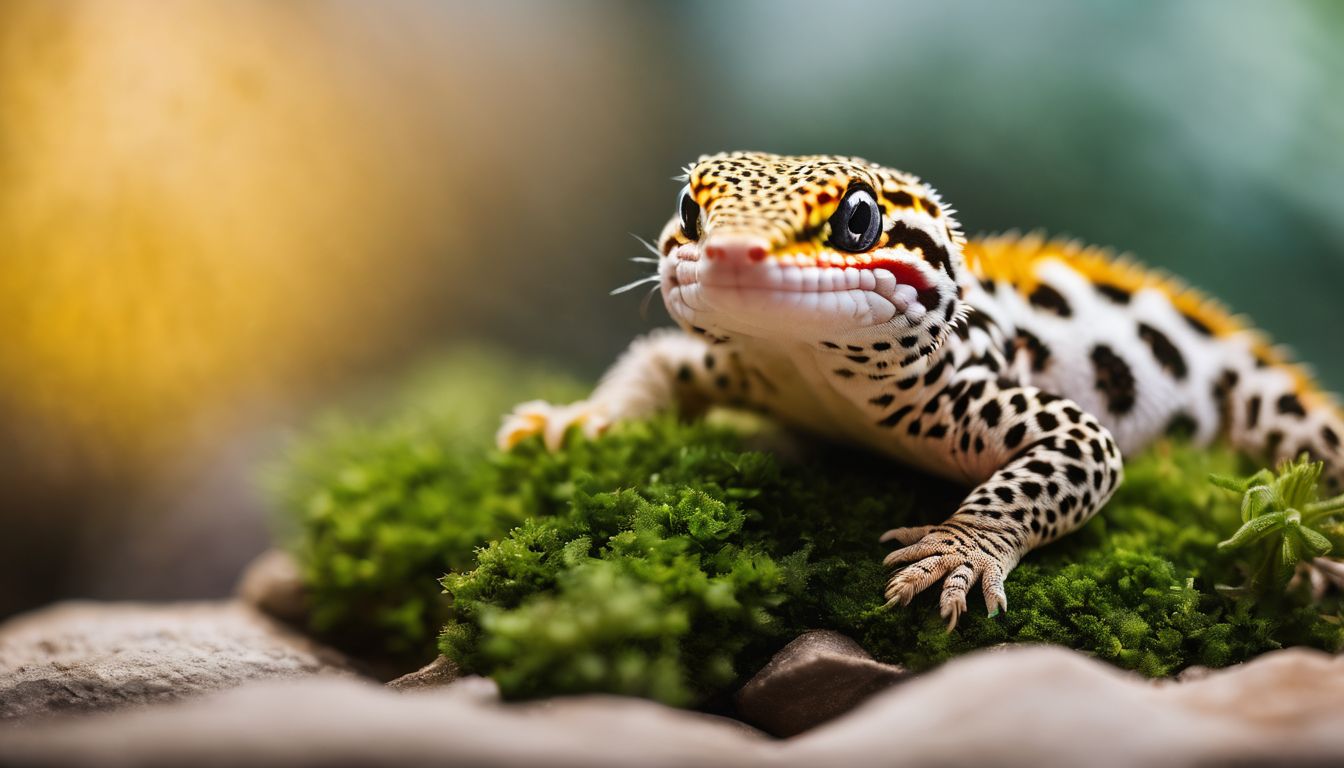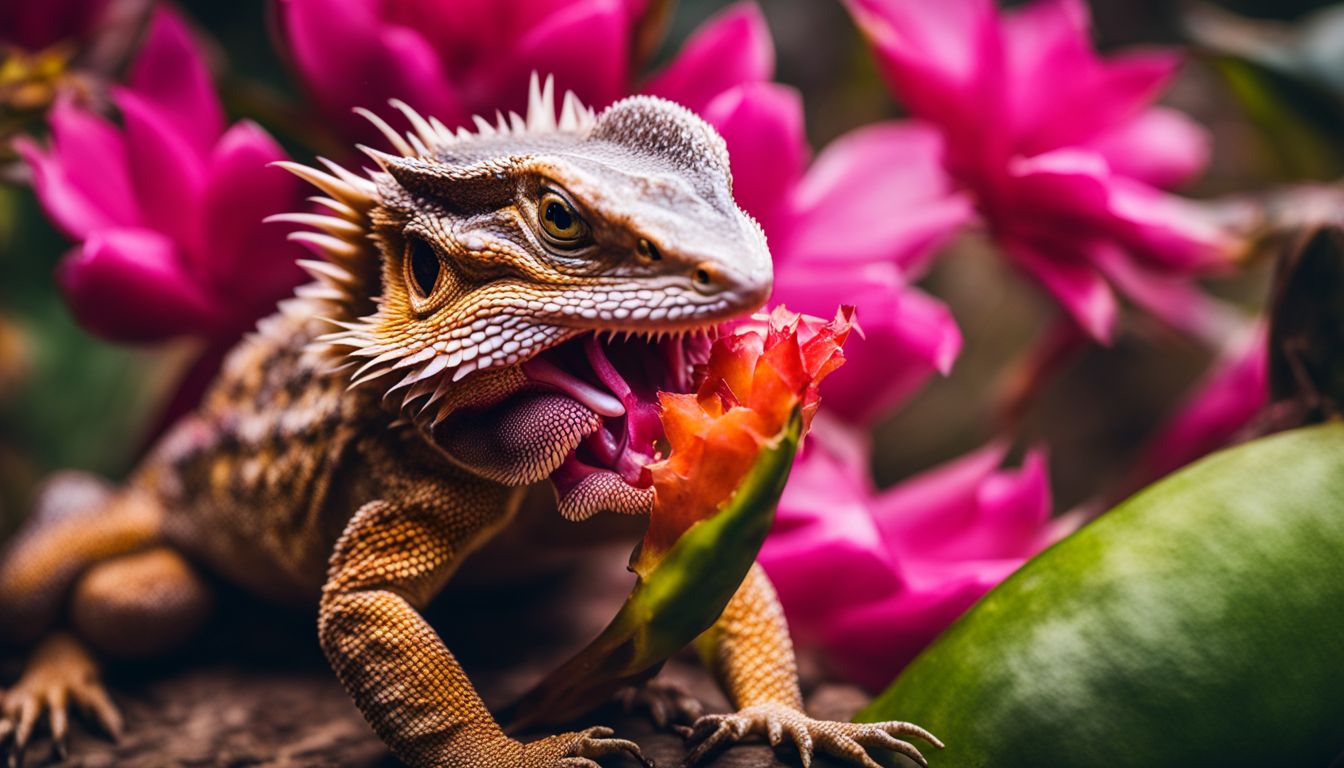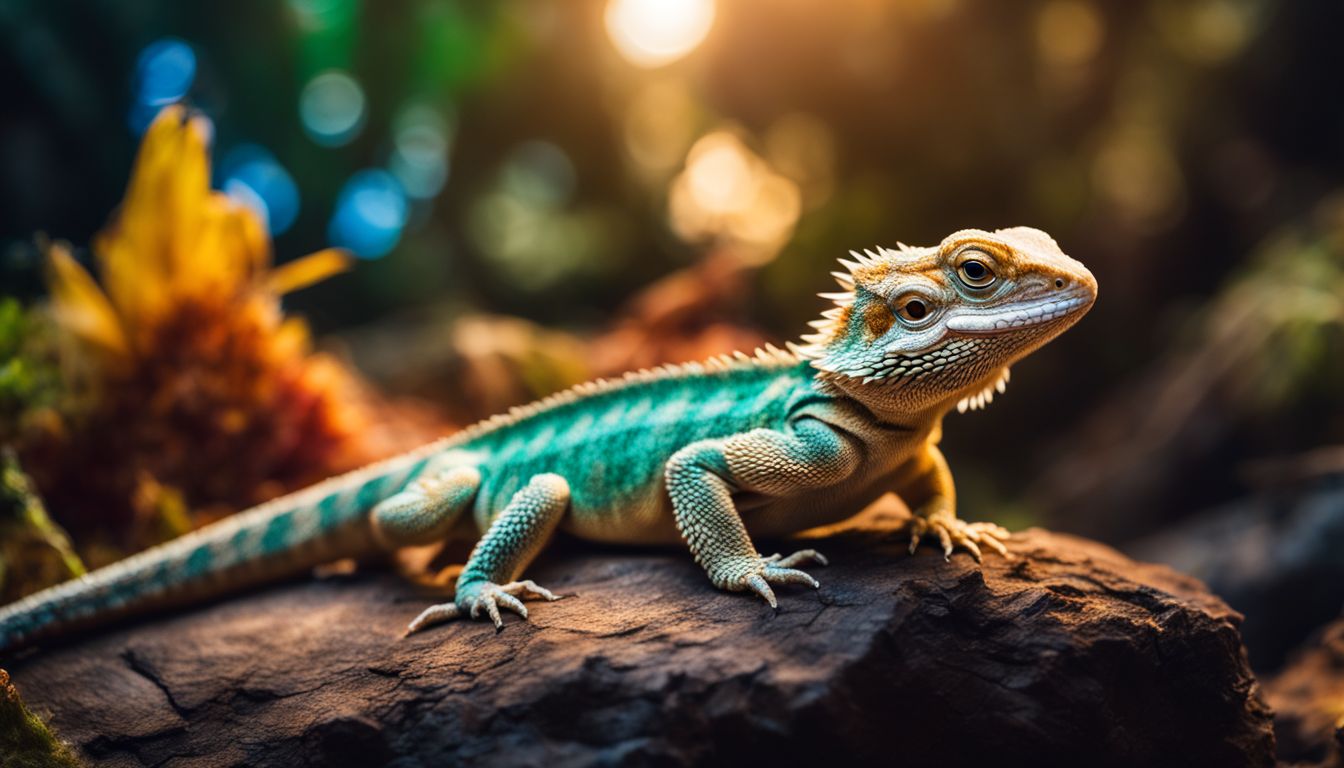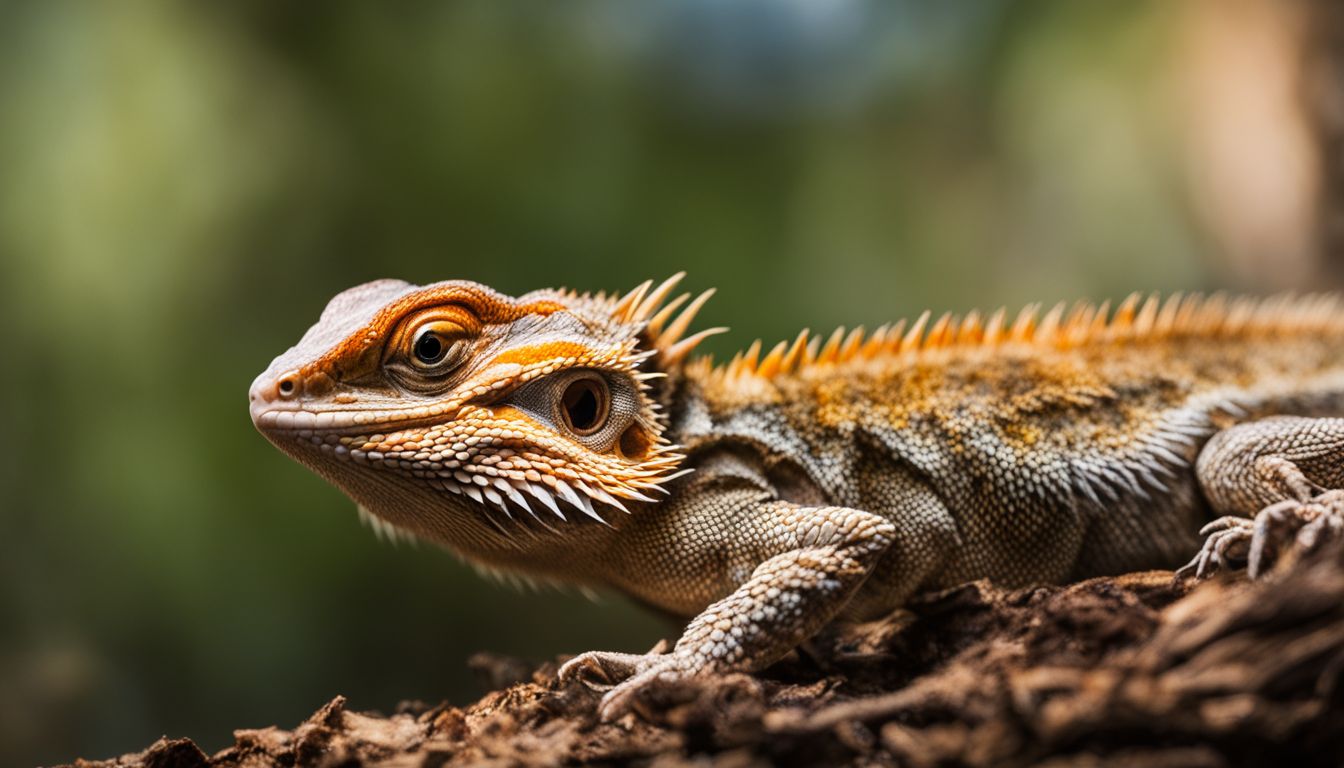Have you noticed your leopard gecko isn’t moving much lately? It’s normal to worry when our scaly friends show signs of inactivity. You might be asking yourself, “Is my pet just taking a long nap, or could it be something more serious?” It’s not uncommon for leopard gecko owners to confuse hibernation—or brumation, as it is known among reptiles—with more alarming issues like illness or even death.
One essential thing to know is that breathing is a good sign that your leopard gecko is alive and well. Our blog post will guide you through understanding the difference between a hibernating gecko and one that has passed away.
We’ll share tips on spotting the signs of dormancy and what to do if your pet is indeed just catching some Zs during the cooler months. Get ready to become an expert at reading your leopard gecko’s sleep habits!
Key Takeaways
- Leopard geckos go through a natural dormancy cycle called brumation during the cooler months, where they sleep more and eat less to conserve energy.
- Signs of hibernation in leopard geckos include decreased activity levels, reduced appetite and digestion, lower body temperature, and slowed respiration rate.
- To differentiate hibernation from death, observe for slight movements and breathing despite the lower body temperature. Lack of response to stimuli, absence of breathing or movement over an extended period, and physical changes indicate potential demise.
Understanding Hibernation vs. Brumation in Leopard Geckos
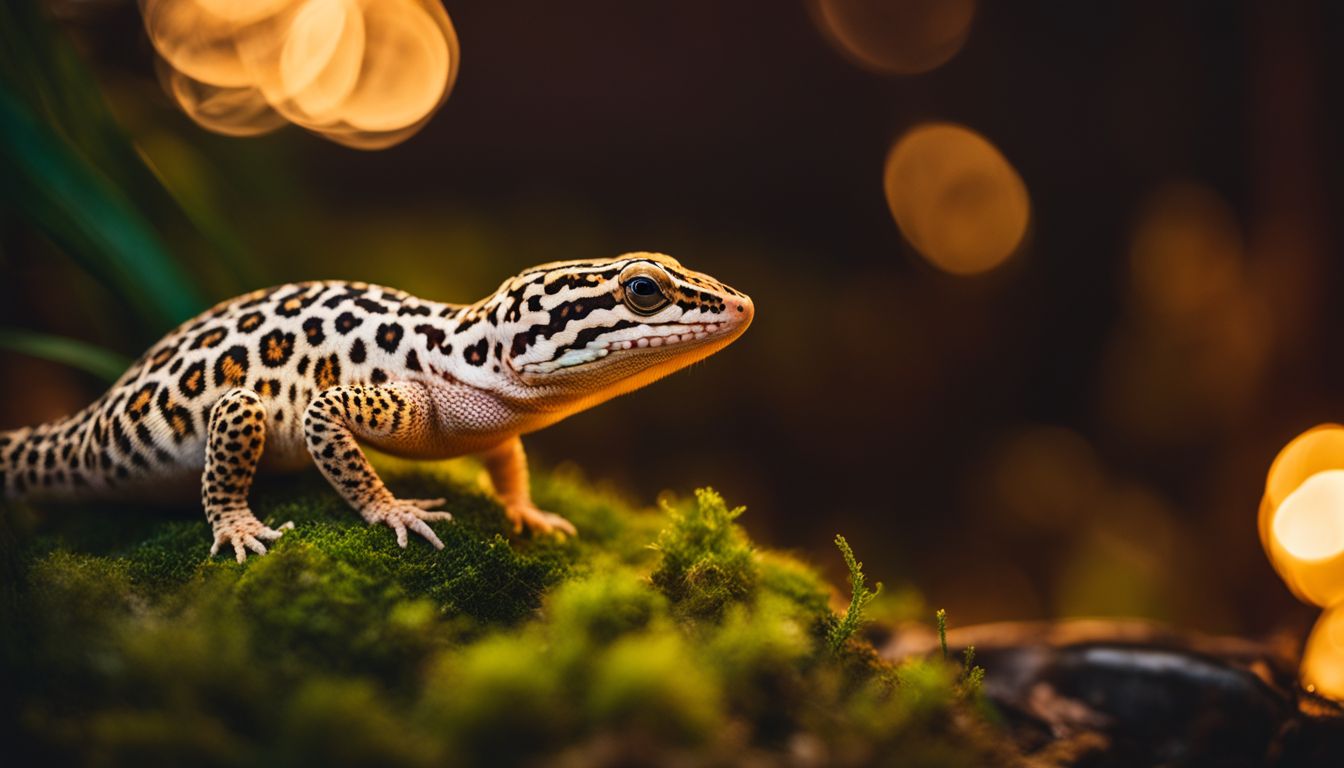
Leopard geckos go through a natural dormancy cycle, known as brumation, which is similar to hibernation in reptiles. It’s essential to understand the specific behaviors and physiological changes that occur during this period to accurately assess your gecko’s health.
The natural dormancy cycle
Many reptiles, including leopard geckos, go through a dormancy cycle. This happens in the cooler months when their bodies slow down to save energy. During this time, your leopard gecko may sleep more and eat less.
Their body temperature drops as they try to get through the cold without much food.
This special type of rest is called brumation for reptiles like your pet. It’s not the same as hibernation that some animals do because it doesn’t last as long and isn’t as deep of a sleep.
Brumation specifics for reptiles are next up!
Brumation specifics for reptiles
In the cooler months, leopard geckos and other reptiles go through brumation. This is a time when they slow down and rest a lot. They may hide more often and seem very still. Even though they are quiet, they still breathe and their hearts keep beating.
Reptile brumation is not the same as sleeping for a long time. Geckos in brumation will wake up sometimes to drink water or move around a little bit before going back to resting. It’s like their body knows it’s too cold outside for being active, so they save energy until it warms up again.
If you see your gecko moving now and then or reacting when you offer water, it’s likely brumating, not dead.
Signs of Hibernation in Your Leopard Gecko
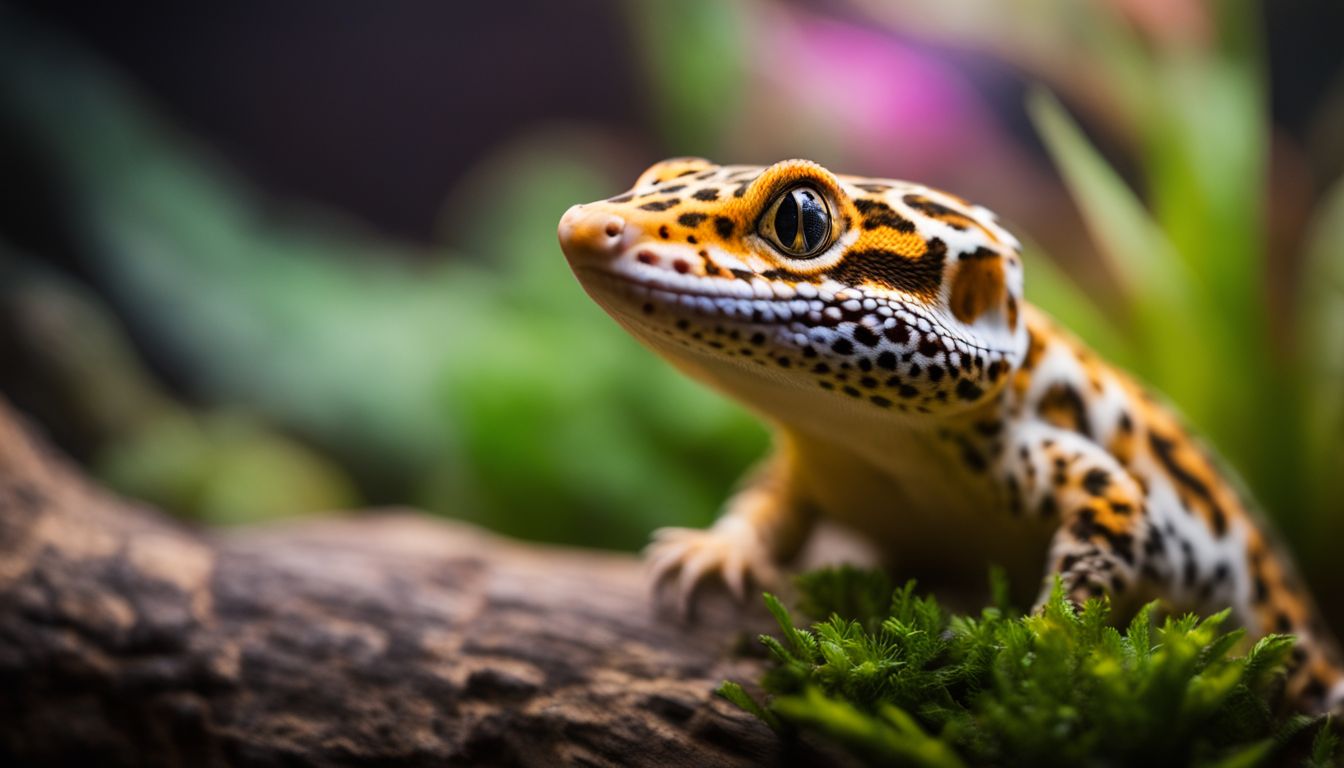
Look out for decreased activity levels and a reduced appetite and digestion. Additionally, observe if your leopard gecko is exhibiting a lower body temperature and respiration rate.
Decreased activity levels
Your leopard gecko might sleep more and move less when it’s brumating. This is like hibernation, but for cold-blooded animals like reptiles. They slow down because the heat in their environment drops during winter times.
Your pet may hide more often and seem lazy.
They also eat less or stop eating when they are brumating. Their bodies use food slower, so they don’t need to eat as much. It’s normal if your leopard gecko isn’t chasing after crickets like before.
Just watch to see that it still breathes and moves now and then; this means it is alive, not dead.
Reduced appetite and digestion
A hibernating leopard gecko often has a reduced appetite and eats less food than usual. During this time, it may also have slower digestion because its body processes slow down. It’s normal for a hibernating leopard gecko to poop less frequently or not at all, as its digestive system slows down along with the rest of its body.
If your leopard gecko is dead, it will show signs of extreme weight loss and lack of appetite long before passing away. Additionally, it may stop pooping entirely due to the shutting down of its bodily functions.
Lower body temperature and respiration rate
During hibernation, a leopard gecko’s body temperature drops significantly. This drop in temperature slows down their metabolism and affects their respiration rate. They will breathe much slower than usual, but there should still be visible movement in their chest indicating that they are breathing.
It’s important to monitor these changes during dormancy to ensure your gecko is indeed hibernating and not deceased.
To determine if your leopard gecko is hibernating or deceased, carefully observe their breathing patterns and check for any signs of movement despite the lower body temperature. If you notice slow but steady chest movements, it indicates that your gecko is alive and undergoing its natural dormancy cycle rather than being deceased.
Identifying a Deceased Leopard Gecko
If your leopard gecko is deceased, there will be a lack of response to stimuli, absence of breathing or movement over an extended period, and physical changes in the body. It’s important to be able to recognize these signs and take appropriate action.
Lack of response to stimuli
If your leopard gecko doesn’t move or react when you touch it, gently tap its side or tail to check for a response. A lack of movement or breathing could be a sign that your gecko might not be alive.
Keep an eye out for other signs like extreme weight loss, sunken eyes, and lethargy, which could indicate potential health issues in your pet.
It’s important to understand these signals to ensure the well-being of your leopard gecko. If you notice any concerning changes in behavior or appearance, it’s best to seek advice from a reptile veterinarian to provide proper care for your pet.
Absence of breathing or movement over an extended period
When determining if your leopard gecko is alive, pay attention to its breathing and movement. A living gecko will show small movements and breathe visibly. If you notice no breathing or movement over a long time, it could indicate that the gecko has passed away.
It’s important to gently observe for signs of life, such as slight body movements or chest rising and falling.
In the unfortunate event that your leopard gecko has ceased breathing or displaying any movement for an extended period, it’s crucial to handle this situation with care and understanding.
Physical changes in the body
When trying to determine if your leopard gecko is hibernating or deceased, you should pay attention to physical changes in the body. A key indicator of a deceased leopard gecko is stiff and sunken skin with no response to touch.
Additionally, pale coloration and eyes that are not alert can also signal that the gecko may have passed away. On the other hand, if your leopard gecko is hibernating, it will still exhibit subtle movements and show signs of breathing despite its decreased activity levels.
Understanding these physical changes is crucial for properly caring for your pet during dormancy periods. By being aware of these differences, you can provide appropriate support whether your leopard gecko is preparing for brumation or experiencing health issues.
Changes in Leopard Gecko’s Appearance During Dormancy
Leopard geckos may experience these changes in appearance during dormancy:
1. Their skin might appear paler than usual.
2. The eyes could seem sunken or less vibrant.
3. Some weight loss may be noticeable, resulting in a thinner appearance.
4. These changes are normal during dormancy and not a cause for immediate concern.
5. However, it’s important to monitor their condition closely to ensure they remain healthy during this period of reduced activity.
Now let’s move on to the next section about “Steps to Take if Your Leopard Gecko is Hibernating”.
Steps to Take if Your Leopard Gecko is Hibernating
– Maintain an appropriate habitat temperature to support their natural dormancy cycle.
– Offer water and monitor weight to ensure they stay hydrated and healthy during hibernation.
– Minimize disturbances to encourage natural behavior and allow them to rest peacefully.
Maintain an appropriate habitat temperature
Ensure your leopard gecko’s habitat stays between 88-92°F during the day and doesn’t drop below 70°F at night. Use an under-tank heater or ceramic heat emitter to maintain a consistent temperature.
A digital thermometer can help you keep track of the temperature in the enclosure. Adjust the heating equipment as needed to ensure your gecko’s comfort.
To avoid stress, provide a warm hide and cool hide within their habitat so they can regulate their body temperature by moving between the two areas as needed. If you observe behavioral changes like decreased activity, it may be a sign that the temperature is not suitable for your leopard gecko.
Offer water and monitor weight
During hibernation, your leopard gecko may not drink much water. However, it’s important to keep fresh water available in case they wake up for a drink. Use a shallow dish so they can easily access the water without risk of drowning as they become more active.
While monitoring their weight is essential, avoid handling them too often to minimize disturbances during this rest period.
Remember that changes in weight and behavior are normal during hibernation or brumation for leopard geckos. Now let’s look at minimizing disturbances to encourage natural behavior.
Minimize disturbances to encourage natural behavior
To encourage your leopard gecko’s natural behavior during hibernation, it is essential to minimize disturbances in their environment. Leopard geckos need a quiet and serene space during their dormancy period to feel safe and comfortable.
Disturbances such as frequent handling or loud noises can disrupt their hibernation cycle and cause stress, which may lead to health issues. Ensuring a peaceful environment with minimal disruptions will allow your gecko to regulate its body functions naturally throughout the hibernation period, promoting overall well-being.
By minimizing disturbances in the habitat, you can help create an ideal environment for your leopard gecko’s natural behavior during dormancy without causing unnecessary stress or disruption.
Conclusion
In summary, understanding the signs of hibernation versus death in a leopard gecko is crucial for ensuring its well-being. The practical steps provided can help you determine and respond appropriately to your pet’s dormancy status.
How will you ensure that your leopard gecko receives the necessary care during dormancy? Are you prepared to take action based on these important distinctions? Recognizing these differences will empower you to provide the best support and care for your leopard gecko’s health and happiness.
This knowledge could make a significant difference in how we understand and care for our reptile companions. Explore further resources or consult a veterinarian if needed to guarantee the well-being of your beloved pet.
If you’re noticing changes in your leopard gecko’s appearance, such as turning white, read our detailed guide on why is my gecko turning white to understand more about their health and well-being.
FAQs
1. How can I tell if my leopard gecko is hibernating or dead?
You can tell if your leopard gecko is hibernating by noticing slower movement, reduced appetite, and seeking cooler areas in their habitat.
2. What should I do if I think my leopard gecko is hibernating or dead?
If you suspect your leopard gecko is hibernating, ensure they have a cool and dark area in their habitat. If you suspect they may be unwell, contact a reptile veterinarian for guidance.
3. Is it normal for leopard geckos to go through periods of hibernation?
Yes, it’s normal for leopard geckos to experience periods of brumation (similar to hibernation), especially during the winter months when temperatures drop.
4. How long does a typical period of hibernation last for a healthy leopard gecko?
A healthy leopard gecko may go into brumation for several weeks up to a few months as a natural behavior response to seasonal changes.
5. Are there any signs that indicate my leopard gecko might be sick rather than just hibernating?
Signs that your leopard gecko might be unwell instead of simply hibernating include extreme weight loss, lethargy, abnormal skin color or texture, or labored breathing.

